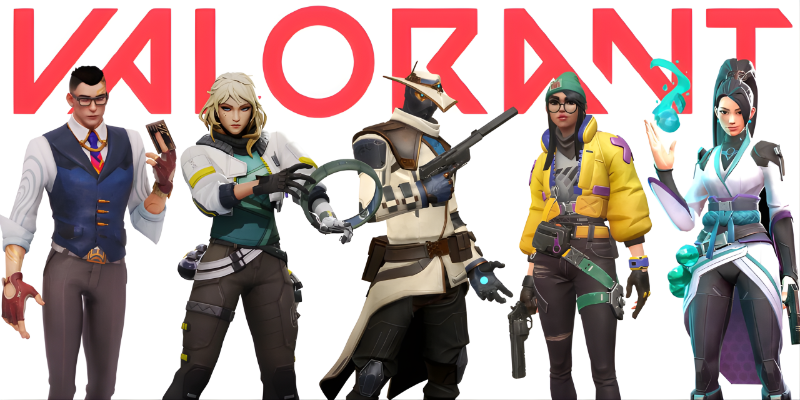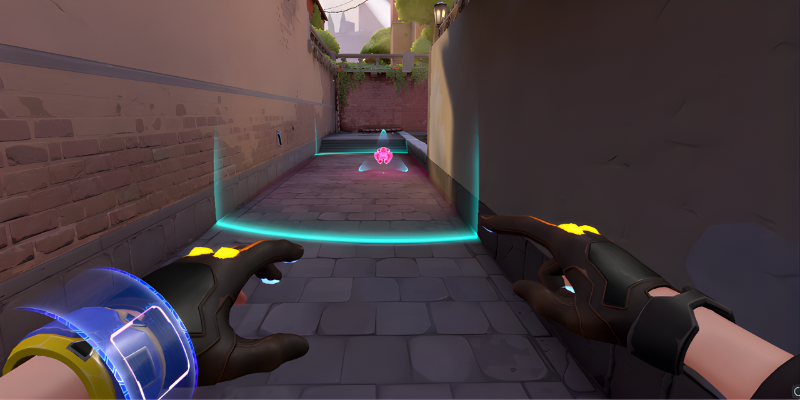Understanding the Sentinel's Core Purpose in Valorant
Sentinels represent the strategic foundation of any successful Valorant team, functioning as the primary defensive coordinators who transform ordinary map positions into impenetrable strongholds. These agents specialize in creating controlled environments that dictate enemy movement patterns while providing essential intelligence to their teammates.

The modern Sentinel's responsibilities extend far beyond traditional defensive holds. They serve as information brokers, using their unique toolkit to gather crucial intel about enemy positions and rotations. Additionally, they act as the team's safety net, ensuring that flanking attempts are detected and neutralized before they can compromise team positioning.
Contemporary Sentinel gameplay demands versatility across multiple phases of each round. During defensive periods, they establish territorial control through strategic utility deployment. In offensive scenarios, they provide security for advancing teammates while maintaining vigilance against counter-attacks. Post-plant situations showcase their ability to deny enemy objectives through area control and tactical stalling.
The Four Pillars of Sentinel Excellence
Territorial Control and Area Denial
Sentinels excel at creating zones of influence that restrict enemy movement options. Through careful placement of defensive utilities, they transform chokepoints into tactical bottlenecks that force opponents into predictable patterns. This territorial dominance allows teams to allocate resources more efficiently across the map.
Intelligence Network Operations
Superior information gathering distinguishes exceptional Sentinels from average defenders. They establish early warning systems that detect enemy approaches, providing teammates with crucial seconds to prepare responses. This intelligence advantage often determines round outcomes through superior positioning and timing.
Post-Objective Security Management
Once objectives are planted, Sentinels become the primary obstacle between enemies and successful defuses. Their ability to delay and disrupt enemy retakes through strategic utility usage and positioning creates extended windows for team rotations and reinforcements.
Team Support Infrastructure
Beyond individual performance, Sentinels provide essential support functions that enhance overall team effectiveness. They trade effectively with teammates, assist in flanking operations, and maintain reliable anchor points that allow more aggressive team members to take calculated risks.
Complete Agent Analysis and Strategic Applications
| Agent | Primary Role | Best Maps | Skill Level |
|---|---|---|---|
| Cypher | Intelligence Specialist | Split, Haven | Intermediate |
| Killjoy | Site Fortification | Ascent, Bind | Beginner |
| Sage | Team Sustainer | All Maps | Beginner |
| Chamber | Mobile Sentinel | Breeze, Icebox | Advanced |
| Deadlock | Advanced Controller | Pearl, Lotus | Advanced |
| Vyse | Dual-Phase Specialist | Sunset, Abyss | Expert |
Cypher - The Information Specialist
Primary Role: Intelligence gathering and map control through surveillance technology
Core Strengths: Cypher dominates through his ability to monitor multiple areas simultaneously without direct presence. His Spycam provides real-time visual intelligence while his Cyber Cages create instant cover and concealment. The Neural Theft ultimate ability reveals enemy positions across the entire map, making him invaluable for strategic planning.
Optimal Map Performance: Cypher achieves peak effectiveness on maps like Split and Haven where his trapwires can monitor critical pathways with maximum efficiency. His distance-unlimited trapwires make him exceptional for lurking strategies, allowing him to maintain map presence while gathering intelligence from remote positions.
Killjoy - The Site Fortification Expert
Primary Role: Complete area lockdown through automated defensive systems
Core Strengths: Killjoy's Turret provides autonomous area coverage while her Nanoswarm grenades deliver devastating area denial capabilities. Her Lockdown ultimate serves as the premier retake tool, forcing enemies out of fortified positions and creating opportunities for team advances.
Strategic Applications: She excels at solo site holding due to her ability to control vast areas with minimal direct oversight. Her automated systems continue functioning even when she's engaged elsewhere, providing consistent map control throughout rounds.
Sage - The Team Sustainer
Primary Role: Team support through healing, area control, and strategic barriers
Core Strengths: Sage's Healing Orb maintains team sustainability throughout extended engagements while her Barrier Orb creates instant cover and blocks enemy advances. Her Resurrection ability provides unmatched tactical value by restoring eliminated teammates to full effectiveness.
Tactical Value: Her Slow Orb excels at chokepoint control, reducing enemy movement speed and creating vulnerability windows. The versatility of her utility makes her valuable across all map types and team compositions.
Chamber - The Mobile Sentinel
Primary Role: Aggressive defense through high-mobility positioning and precision elimination
Core Strengths: Chamber combines defensive utility with exceptional dueling capabilities through his Headhunter pistol and Tour De Force sniper rifle. His Rendezvous teleport anchors enable aggressive positioning with guaranteed escape routes.
Unique Advantages: His Trademark sensors provide flank detection while his ultimate weapon delivers one-shot elimination potential with built-in enemy slowing effects. This combination of mobility and firepower makes him ideal for dynamic defensive strategies.
Deadlock - The Advanced Controller
Primary Role: Battlefield manipulation through sophisticated detection and barrier systems
Core Strengths: Deadlock's Sonic Sensor provides audio-based detection capabilities while her Barrier Mesh creates temporary but powerful area denial. Her GravNet immobilizes enemies for team elimination opportunities.
Specialized Applications: Her Annihilation ultimate excels at space creation and post-plant scenarios where enemy positions are predictable. The advanced nature of her toolkit requires precise timing but delivers exceptional results when properly executed.
Vyse - The Dual-Phase Specialist
 Vyse
Vyse
Primary Role: Utility disruption with equal effectiveness in offensive and defensive scenarios
Core Strengths: Vyse's Razorvine creates movement-punishing zones while her Shear ability provides team support through enemy detection and damage dealing. Her Arc Rose serves as an advanced warning system that penetrates walls and structures.
Modern Applications: Her Steel Garden ultimate disrupts enemy setups and forces unfavorable engagements. The ability to flash for teammates while maintaining defensive capabilities makes her exceptionally versatile across different team strategies.
Advanced Defensive Strategy Implementation

Pre-Round Preparation Protocols
Effective Sentinel defense begins before enemy contact through systematic utility deployment. Establish defensive assets immediately upon round start, prioritizing areas with highest enemy approach probability. This preparation phase determines defensive effectiveness throughout the entire round.
Dynamic Chokepoint Management
Master the art of chokepoint control by identifying primary enemy approach routes and establishing overlapping coverage zones. Utilize abilities to create momentum breaks that force enemies to expend resources and expose themselves to team rotations. Effective chokepoint management transforms predictable areas into tactical advantages.
Adaptive Defense Frameworks
Maintain flexibility in defensive setups to counter evolving enemy strategies. When opponents consistently target specific areas, implement defensive relocations that force them to adapt their approaches. This adaptive mindset prevents enemies from developing comfortable attack patterns.
Setup Variation Strategies
Develop multiple utility placement patterns for each map position to maintain unpredictability. Varied setups force enemies to invest additional resources in area clearing while preventing them from developing consistent counter-strategies. This unpredictability multiplies defensive effectiveness over multiple rounds.
Communication Networks
Establish clear communication protocols for sharing enemy intelligence, rotation information, and utility status updates. Timely information sharing enables team-wide coordination that maximizes defensive effectiveness. Develop standardized callouts that provide precise location information without confusion.
Strategic Withdrawal Protocols
Recognize optimal timing for tactical retreats when facing overwhelming enemy pressure. Solo site holding against coordinated team pushes often results in elimination without strategic value. Develop withdrawal routes and regrouping positions that maintain team cohesion while preserving defensive utility for subsequent engagements.
Offensive Sentinel Operations
Advanced Lurking Techniques
Transform defensive specialists into information-gathering assets through strategic lurking operations. Position yourself in areas where enemy rotations are likely while maintaining communication with the primary team advance. Successful lurking provides elimination opportunities and crucial intelligence about enemy positioning.
Flank Security Management
Establish automated security systems that monitor team flanks during offensive advances. Deploy detection utilities in areas where enemy flankers are most likely to approach, enabling the primary team to focus on objective completion without constant threat assessment.
Controlled Area Denial
Utilize area denial abilities to prevent enemy retakes and rotations during offensive operations. Lock down critical pathways that enemies need for defensive coordination, forcing them into unfavorable positions or extended rotation routes that compromise their defensive effectiveness.
Post-Plant Dominance
Maximize post-plant advantages through strategic utility deployment that delays and disrupts enemy retake attempts. Create multiple layers of area denial that force enemies to expend significant resources while providing teammates with extended rotation windows.
Entry Support Operations
While not primary entry fraggers, Sentinels provide crucial support through teammate trading and angle clearing assistance. Position yourself to capitalize on entry fragger engagements while maintaining the ability to slow down enemy counter-attacks.
Master-Level Utility Placement Strategies

Sage Utility Optimization
Barrier Orb Mastery: Deploy horizontal barriers across main entrance points to block coordinated enemy rushes. Force attackers to spend time and resources destroying barriers while team rotations arrive. Avoid random wall placements that provide no strategic value.
Slow Orb Precision: Position Slow Orbs at natural chokepoints and common spike plant locations to maximize enemy disruption. Use them reactively to disrupt post-plant defuses or proactively to slow coordinated pushes.
Healing Orb Management: Maintain mental mapping of teammate positions and health status for optimal healing timing. Prioritize healing teammates who can immediately return to combat effectiveness over those requiring extended recovery time.
Killjoy System Deployment
Turret Positioning: Place turrets in locations that provide maximum angle coverage while maintaining protection from easy destruction. Prioritize positions that can detect multiple enemy approach routes and provide early warning information.
Alarmbot Strategies: Deploy Alarmbots in off-angle positions behind cover where they can surprise unsuspecting enemies. Use them as detection tools for flanking attempts while maintaining primary defensive positions.
Nanoswarm Applications: Pre-place Nanoswarms at default spike plant locations for immediate post-plant denial. Reserve some grenades for reactive use against unexpected enemy advances or retake attempts.
Cypher Intelligence Networks
Trapwire Versatility: Master multiple trapwire setups for various map configurations and enemy strategies. Position them in non-obvious locations while using Cyber Cages as concealment tools that activate when enemies trigger detection systems.
Spycam Operations: Establish camera positions that provide maximum map coverage while remaining protected from enemy detection and destruction. Use cameras for real-time intelligence gathering rather than passive surveillance.
Neural Theft Timing: Deploy the ultimate ability during crucial information-gathering moments such as retake preparations or when enemy positions are unknown. Maximize its strategic value through proper timing rather than immediate usage.
Chamber Mobility Systems
Trademark Efficiency: Place Trademark sensors in locations where they effectively monitor flanking routes while you maintain different angle coverage. Since Chamber has limited trap quantities, prioritize placements that provide maximum strategic value.
Teleport Anchor Management: Position Rendezvous anchors that enable aggressive information gathering with guaranteed escape routes. Use them for dynamic positioning that confuses enemy predictions while maintaining defensive effectiveness.
Weapon Integration: Combine surveillance abilities with precision weapon skills to maximize elimination potential. Use detection information to pre-aim positions where enemies are likely to appear.
Deadlock Advanced Deployment
Barrier Mesh Excellence: Deploy walls during pistol rounds for extended area control that's particularly effective against limited enemy firepower. Create space and time advantages that translate into round victories.
Sonic Sensor Networks: Position sensors to detect flanking attempts and site floods before they become threatening. Use audio detection to provide early warning systems that enable team preparation.
Annihilation Applications: Reserve ultimate usage for space creation opportunities and post-plant scenarios where enemy positions are predictable and escape routes are limited.
Vyse Modern Techniques
Arc Rose Penetration: Deploy through walls at common enemy approach angles to provide early warnings and enemy disruption. Use wall penetration capabilities to monitor areas that traditional surveillance cannot reach.
Shear Isolation: Position in entryways to catch attacking enemies by surprise while isolating them from team support. Create engagement opportunities that favor team trades and eliminations.
Razorvine Timing: Activate during critical moments such as enemy pushes and spike plant attempts to maximize damage and disruption. Use movement punishment to create vulnerability windows for team exploitation.
Steel Garden Control: Deploy ultimate to disrupt enemy defensive setups and force them into unfavorable engagement positions. Use it to break enemy coordination and create advancement opportunities.
- Excellent map control capabilities
- Strong information gathering potential
- Reliable defensive foundations
- Game-changing ultimate abilities
- High team utility value
- Limited mobility options
- Vulnerable when isolated
- Utility-dependent playstyle
- Requires strong game sense
- Team coordination reliance
Path to Sentinel Mastery

Achieving excellence in the Sentinel role requires a comprehensive understanding of map control principles, precise timing execution, and optimal positioning strategies. Success comes through selecting appropriate agents for specific situations, implementing sophisticated defensive and offensive strategies, and perfecting utility deployment techniques that provide maximum team value.
Continuous practice remains essential for developing the reflexes and game sense necessary for high-level Sentinel play. Adaptation to different enemy playstyles and effective team communication serve as the foundation for exceptional performance in this crucial role.
The most successful Sentinels embrace experimentation and technique refinement, constantly seeking new approaches that enhance their effectiveness. This commitment to improvement and innovation distinguishes exceptional players from those who merely follow established patterns.

